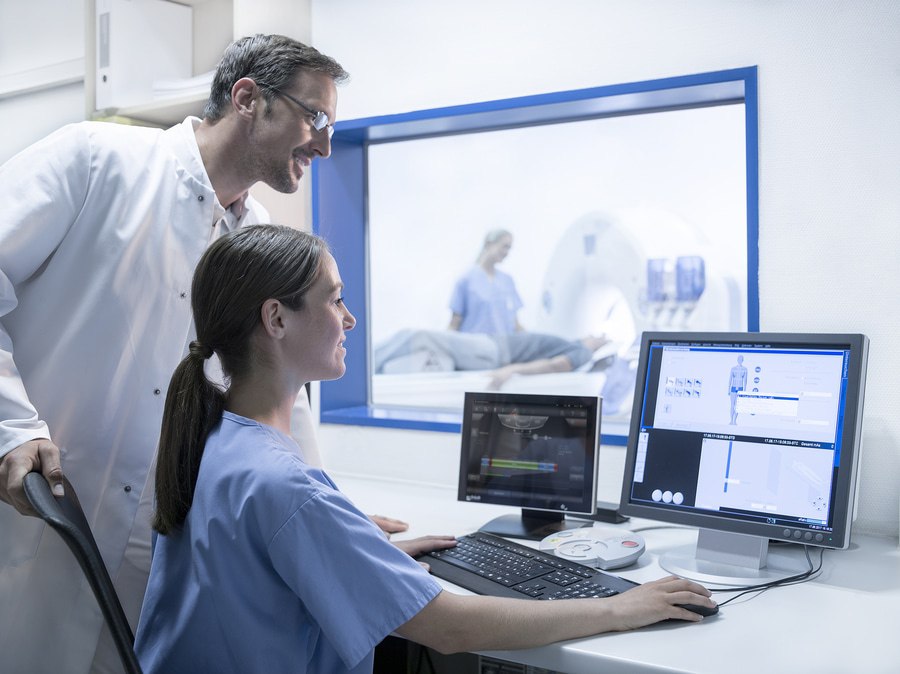PACS Imaging Software – Revolutionizing Healthcare – Avanttec Medical Systems
In the ever-evolving landscape of healthcare technology, Picture Archiving and Communication Systems (PACS) have emerged as a game-changer. This revolutionary software is transforming the way medical professionals manage, store, and share medical images within a hospital or healthcare facility. With its seamless integration into existing hospital systems, PACS Imaging Software has become an indispensable tool for teaching and research purposes, propelling the medical field to new heights.
PACS Imaging Software, developed by companies like Avanttec Medical Systems, allows healthcare providers to store, retrieve, and distribute medical images like X-rays, CT scans, and MRIs digitally, eliminating the need for physical films and facilitating seamless access to patient data. The software’s ability to integrate with hospital information systems has empowered physicians, radiologists, and other healthcare professionals to access crucial patient information in real time.
PACS imaging software serves as a vital component in the management of medical images, offering a seamless and efficient way to handle an extensive volume of patient data. It allows healthcare professionals to capture, store, retrieve, and distribute radiological images, such as X-rays, ultrasounds, CT scans, and MRIs, in a digital format. Gone are the days of physical film-based images that were prone to damage, loss, or misplacement. PACS imaging software ensures that medical images are securely stored and readily accessible at any time, from anywhere.
One of the primary functions of PACS Imaging Software is to provide an efficient and secure platform for storing medical images. Gone are the days of physical film-based image storage, which was not only cumbersome but also susceptible to damage. With PACS, medical images are digitized and saved onto a central server, eliminating the need for physical storage space. This not only streamlines image retrieval and management but also ensures their long-term preservation, as digital images can be easily backed up and archived.
Furthermore, PACS Imaging Software allows medical professionals to access patient images from any location within the hospital or even remotely. This quick and convenient access to critical medical data plays a vital role in enhancing patient care and treatment. Doctors can review and analyse images promptly, enabling them to make accurate diagnoses and develop appropriate treatment plans. Additionally, PACS facilitates collaboration among healthcare professionals by enabling easy sharing of images and consultations, leading to improved patient outcomes, and reduced medical errors.
Avanttec PACS imaging software. Academic institutions and healthcare organizations can utilize the software for educational purposes, allowing students and researchers to access a vast library of medical images, case studies, and teaching files. This promotes a dynamic learning environment and encourages the development of innovative approaches to medical challenges. Furthermore, PACS imaging software enables the integration of additional analysis tools, such as 3D image reconstruction and computer-aided diagnosis, providing valuable insights and supporting advanced research endeavours.
Teaching and research are fundamental pillars of the healthcare industry. PACS Imaging Software has revolutionized the way medical professionals educate themselves and conduct research. With PACS, teaching hospitals now can access an extensive database of images, allowing them to use real-life case studies for educational purposes. This not only enriches the learning experience for medical students but also enhances their diagnostic skills and prepares them for real-world challenges.
Moreover, PACS Imaging Software has proved to be an asset in medical research. By integrating with research databases and utilizing its extensive data analytics capabilities, this software allows researchers to study large patient cohorts, track disease progression, and evaluate treatment efficacy. With the vast amount of anonymized patient data available at their fingertips, scientists can uncover patterns, make breakthrough discoveries, and contribute to the advancement of medical knowledge. This not only fuels innovation but also facilitates evidence-based medicine, leading to better patient care.
PACS Imaging Software plays a crucial role in research endeavours within the medical field. Researchers can access vast repositories of patient images, enabling them to study and analyse data on a larger scale. This invaluable resource opens new avenues for medical breakthroughs and advancements, guiding the development of more effective treatments and diagnostic techniques. PACS provides researchers with a powerful tool to conduct detailed studies and draw comprehensive conclusions, leading to evidence-based medicine and improved patient care.
It is worth mentioning that while PACS Imaging Software offers numerous benefits, implementing and maintaining this technology is not without its challenges. Hospitals and healthcare facilities need to invest in robust infrastructures, secure networks, and top-tier cybersecurity to ensure patient data is protected. Additionally, continuous training and updates are necessary to maximize the software’s potential and stay up to date with the latest advancements.
PACS Imaging Software has revolutionized the healthcare industry by streamlining image management, enhancing patient care, and propelling education and research. With its ability to store and retrieve digital images seamlessly, PACS has simplified the way medical professionals’ access critical patient data. By facilitating collaboration and enabling remote access, PACS has paved the way for more efficient and accurate diagnoses. Moreover, its role in education and research has transformed the way medical professionals learn, conduct studies, and contribute to advancements in the field. As healthcare technology continues to evolve, PACS Imaging Software remains at the forefront, revolutionizing the way we approach patient care, education, and research.


